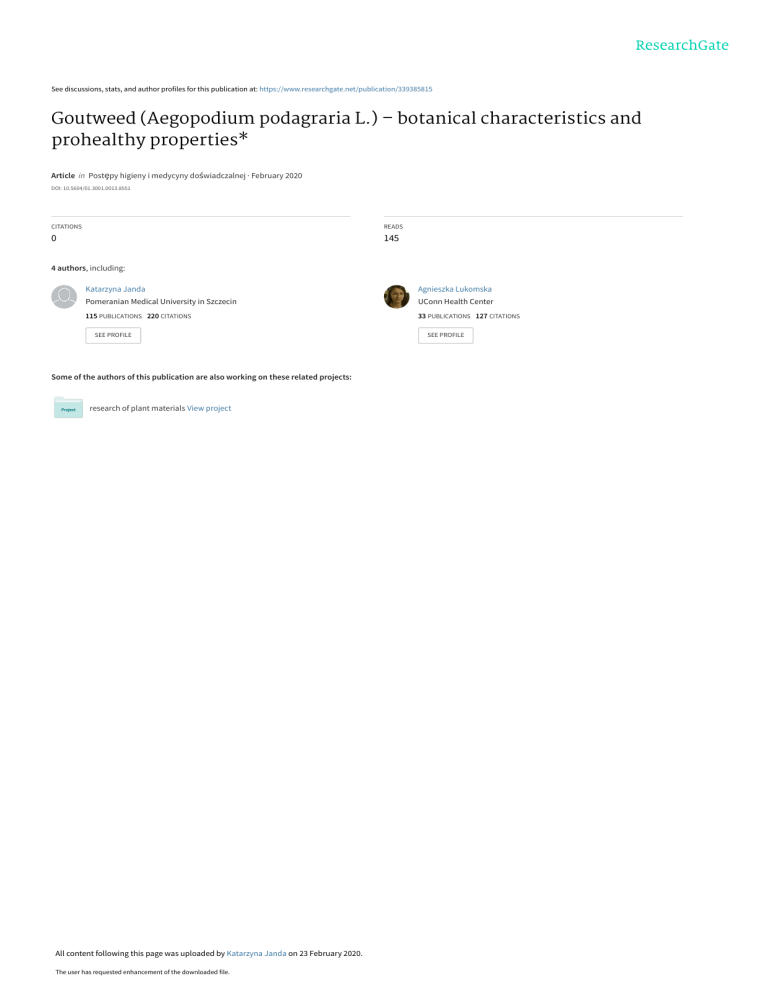
See discussions, stats, and author profiles for this publication at: https://www.researchgate.net/publication/339385815 Goutweed (Aegopodium podagraria L.) – botanical characteristics and prohealthy properties* Article in Postȩpy higieny i medycyny doświadczalnej · February 2020 DOI: 10.5604/01.3001.0013.8551 CITATIONS READS 0 145 4 authors, including: Katarzyna Janda Agnieszka Lukomska Pomeranian Medical University in Szczecin UConn Health Center 115 PUBLICATIONS 220 CITATIONS 33 PUBLICATIONS 127 CITATIONS SEE PROFILE Some of the authors of this publication are also working on these related projects: research of plant materials View project All content following this page was uploaded by Katarzyna Janda on 23 February 2020. The user has requested enhancement of the downloaded file. SEE PROFILE Postepy Hig Med Dosw (online), 2020; 74: 28-35 e-ISSN 1732-2693 Received: 06.05.2019 Accepted: 07.11.2019 Published: 19.02.2020 www.phmd.pl Review Goutweed (Aegopodium podagraria L.) – botanical characteristics and prohealthy properties* Podagrycznik pospolity (Aegopodium podagraria L.) – charakterystyka botaniczna i właściwości prozdrowotne Karolina Jakubczyk1, Katarzyna Janda1, Daniel Styburski2, Agnieszka Łukomska3 1 Department of Human Nutrition and Metabolomics, Pomeranian Medical University in Szczecin, Szczecin, Poland Department of Medical Chemistry, Pomeranian Medical University in Szczecin, Szczecin, Poland 3 Nencki Institute of Experimental Biology PAS, Laboratory of Neuroplasticity, Warsaw, Poland 2 Summary Goutweed (Aegopodium podagraria L.) is a common plant in the Apiaceae family. It occurs in Europe, North America and Asia. In folk medicine, mainly the leaves of goutweed were used to treat gout, inflammatory states in kidneys and bladder and to facilitate wound healing. Chemical composition of goutweed has not been entirely determined, however, it is known that the main group of compounds are polyacetylenes (falcarinol and falcarindiol). Moreover, other compounds were isolated from this plant, such as essential oils from the group of mono- and sesquiterpenes, as well as coumarins and polyphenol compounds, e.g. phenolic acids and flavonoids. Preparations from goutweed have anti-inflammatory and antimicrobial properties. Research performed in recent years have shown the possibilities to use tinctures and extracts from goutweed in the treatment of gout and metabolic diseases including type 2 diabetes. Keywords: GICID DOI: Word count: Tables: Figures: References: Author’s address: goutweed • health benefits • phytotherapy • bishop’s weed • gout 01.3001.0013.8551 10.5604/01.3001.0013.8551 5594 1 1 55 Katarzyna Janda, Department of Human Nutrition and Metabolomics, Pomeranian Medical University in Szczecin, Broniewskiego 24, 71-460 Szczecin; e-mail: [email protected] *The project is funded by the program of the Minister of Science and Higher Education under the name “REGIONALNA INICJATYWA DOSKONAŁOŚCI” in 2019-2020 (Grant number 002/RID/2018/19 financing amount PLN 12.000.000.) 28 Postepy Hig Med Dosw (online), 2020; 74 Jakubczyk K. et al. – Goutweed (Aegopodium podagraria L.)... INTRODUCTION Aegopodium podagraria L. is a plant in the Apiaceae family (Tab. 1). It commonly occurs in Europe, North America and Asia [4, 10, 15, 16, 18, 31, 35]. Common names for this species are e.g. bishop’s goutweed, bishop’s weed, ground elder, herb Gerard, gout wort, wild masterwort, and snow-in-the-mountain [6, 7, 41, 42]. This perennial plant prefers shady and humid places. It can be seen in deciduous and mixed woodlands or forests, shrublands, gardens, near houses and shorelines. It is a weed difficult to eradicate, because is spreads quickly from root fragments and rhizomes [27]. Aegopodium podagraria is highly competitive against other species and thus spreads rapidly on a given territory, often forming dense mats [27]. METHODOLOGY This literature survey investigated various nutrients, secondary metabolites, vitamins, mico-, macro elements present in goutweed and evaluated their impact on human health. The data were retrieved using popular search engines such as PubMed, Google Scholar, Science Direct by searching the content of numerous indexed journals related to phytotherapy, herbal medicine, the chemical composition of plants and human nutrition. Referenced studies published in indexed journals were included. The keywords used to search for literature included goutweed or bishop’s weed as related to health benefits; phytotherapy; chemical composition; health responses. BOTANICAL CHARACTERISTICS Goutweed grows from 30 to 100 cm tall. Its stem is short, hollow, with longitudinal grooves and rims, roughly hairy. The leaves are on long stalks, tri-ternate, and the middle leaf is the largest. The lobes are unsymmetrical, ovate, sharp, single or doubly serrated and stemmed [27]. The leaves leaf basis form a sheath. Upper leaves are single, tri-ternate and broad. The flowers, 3 mm in size, are in large compound umbels, terminal with 12–30 rays, without bracts and bracteoles [27]. In each umbel there are from 12 to 30 single small flowers placed on even in length rough pedicels. The flower has 5 obcordate petals, 5 stamens and 1 pistil. Petals are white or light pink with sharp tips [27]. The fruit is schizocarp splitting into two oval mericarps. Seeds are brown with two lighter ribs. Root system is formed by spreading rhizomes and light underground runners, present just under the surface of the soil. Goutweed is insect pollinated and blooms from July to August [27, 30, 37]. CHEMICAL COMPOSITION OF AEGOPODIUM PODAGRARIA Chemical composition of A. podagraria is comparatively little known. Despite the studies on the content of some bioactive and mineral compounds, the information on the composition of goutweed is still incomplete, as often not all parts of the plants were analysed. Based on available literature it could be deduced that the most important fraction of chemical compounds present in this plant are polyacetylenes (polyins) (Fig.1). These compounds include falcarinol, falcarindiol, falcarinon and falcarinolon [9, 27, 39] with anti-inflammatory and antimicrobial properties [19]. One of the characteristics of Apiaceae family is the presence of aliphatic C17 – polyacetylenes of the falcarinol type. The substrates for the formation of these compounds are unsaturated fatty acids. Falcarinol and its derivatives are formed from oleic acid via oxidation and dehydrogenation [27]. Polyacetylenes are present in all morphological parts of the plant (flowers, rhizomes, leaves, stems and seeds). Their biosynthesis increases in response to fungal, bacterial and viral infections [9]. The contents of these compounds in certain parts of the plant changes depending on the Table 1. Taxonomy of Goutweed TAXONOMY Kingdom Plantae – plantes, Planta, Vegetal, plants Subkingdom Viridiplantae Infrakingdom Streptophyta – land plants Superdivision Embryophyta Division Tracheophyta – vascularplants, tracheophytes Subdivision Spermatophytina – spermatophytes, seedplants, phanérogames Class Magnoliopsida Superorder Asteranae Order Asteranae Family Apiaceae Genus Aegopodium L. – goutweed Species Aegopodium podagraria L. – bishop’sgoutweed 29 Postepy Hig Med Dosw (online), 2020; tom 74: 28-35 time of the year. The highest amount is typically noted in leaves, however during blooming the flowers are the richest source of polyacetylenes [27]. The content of falcarindiol is then several times higher than in other parts of the plant. It is assumed that it is related to protective function played by polyacetylenes [39]. It was observed that essential oils from goutweed leaves contained 0.6% of falcarinol, whereas its stem contained 0.2% [34]. Fig. 1. Chemical structure of main polyacetylenes present in Aegopodium podagraria Another important group of chemical compounds present in goutweed are essential oils containing mostly monoand sesquiterpenes. Chemical composition of A. podagraria depends not only on vegetation period but also on the origin of the raw material [27]. Goutweed from Russia (the Republic of Bashkortostan) during blooming was characterized by significant amount of sabinene at the level of 63%, and other essential oils were present at lower amounts, i.e.: α-pinene (3.6%), β-pinene (3.79%), myrcene (2.17%), α-thujone (0.63%), ethyl acetate (4.82%), dehydro-p-cymene (3.39%), and β-phellandrene present at the amount of 0.65% [35]. Those compounds mainly belonged to the group of monoterpenes. In a plant from Siberia the prevailing substance in the essential oil was α-pinene (13.3%), and further on limonene (9.4%), p-cymene (8.8%), (Z)- β-ocymene (5.2%), β-pinene (5.0%), germacrene D (4.7%), spatulenol (4.4%), α-thujone (4.2%), perillaldehyde (4.1%), (E)-β-caryophyllene (3.9%), (E)-caryophyllene oxide (3.4%) and myrcene (3.4%). The concentration of sabinene was only 1.8% [24]. The differences between the composition of essential oils in leaves and stems of goutweed were observed in Estonia. More of these bioactive compounds were present in stems (3.8 mg/g) than in leaves (1.7 mg/g). In leaves, the main group was monoterpenes, including β-pinene (29.4%), limonene (18.4%), α-pinene (15.7%) and γ-terpinene (15.5%). In stems there were mainly monoterpenes (44%), dominated by β-pinene (11.1%), limonene (8.2%), γ-terpinene (8.2%) and α-pinene (6.6%), and in smaller amounts sesquiterpenes (29.8%), including germacrene (15.65%) and (E)-α-bergamotene (4.8%) [34]. Goutweed also contains polyphenols from the phenolic acids, e.g. hydroxycinnamic acid, and flavonoids [5, 10, 25, 34, 39]. These are the main compounds responsi- 30 ble for pharmacological properties of the plant [25, 34]. Jakubczyk et al. (2018) showed that that the overall content of polyphenols in the ethanolic extracts from different organs of Aegopodium podagraria L. depends on the temperature of extraction and the morphological part of the plant. The concentration range of polyphenols in the extracts ranged from 6.3 to 34.5 ppm. The highest polyphenol content was recorded for flower extracts, the lowest for seeds extracts. For all parts of the plant, with the exception of flowers, there was a higher content polyphenols in extracts prepared at 80°C [20]. The Apiaceae family is also known to contain coumarins. Angelicin was found in leaves, fruits and roots of goutweed, and arterin was found in roots. The presence of angular furanocoumarins was also confirmed in leaves [33]. In preparations from A. podagraria L. the derivatives of hydroxycinnamic acid were identified, e.g. caffeic acid and chlorogenic acid [10]. Extracts from the plants contained flavonoid glycosides and derivatives of quercetin (hyperoside, isoquercetin), derivatives of kaempferol (trifoline) and unspecified rhamnoglucoside [10]. The analysis of carotenoids in the plant collected from April to May showed the changes in the content of analysed bioactive compounds. The amount of β-carotene ranged from 9.9 to 11.0 mg/100g of the raw material, depending on the time when the plant was collected, whereas the amount of xanthophyll was maintained on the level of 7.3–8.0 mg/100 g. The content of neoxanthin ranged from 4.1 to 4.7 mg/100 g. The content of lutein was higher in end May and amounted to 11.9 mg/100 g [21]. Goutweed is also appreciated as a source of vitamins and macro- and microelements, including iron, copper, manganese, calcium and potassium. Leaves, in comparison with stems, are a richer source of minerals (Zn, Cu, Cr, Mn, Co and Pb), excluding potassium, whose amount was twice lower than in stems (3.8 and 7.6 g/100 g of raw material, respectively) [34]. The plant contains 0.21-0.22 g/100g magnesium and also zinc (3.9 mg in leaves and 2.4 g in stems), manganese (3.2 mg in leaves and 2.0 mg in stems) and copper (0.37 mg in leaves and 0.19 mg in stems). In Dębia [12] studies, the flu­oride content in the infusions from this plant was measured. The concentration of fluoride in the infusions was diversified depending on the morphological part of the plant and the temperature of water used to prepare the infusions. The lowest content of this element was observed in rhizome infusions (0.057±0.004 mg/L), and the highest in seed infusions (0.333±0.045 mg/L). In both cases the infusions were prepared with water at 80°C. The statistical analysis of the results showed that both the morphological part of plant and water temperature had an influence on the content of fluoride in the infusions [12]. Ascorbic acid, tocopherols and carbohydrates (glucose, fructose) were already measured in A. podagraria L. [21, 27, 43]. In rhizomes, a high concentration of lectins, a group of proteins or glycoproteins binding carbohydrates, was also observed [36]. Jakubczyk K. et al. – Goutweed (Aegopodium podagraria L.)... PROPERTIES AND FOLK USE OF THE PLANT ANTIMICROBIAL PROPERTIES Aegopodium podagraria in folk medicine was used from ancient times, mainly in treatment of rheumatic diseases, gout and sciatica [17]. The plant has calming, diuretic, anti-inflammatory and antimicrobial properties [45]. Tea from dried leaves is a medicine recommended for the treatment of gout, haemorrhoids, inflammatory states of kidneys and bladder, auxiliary in nephrolithiasis and to improve metabolism. Fresh leaves administered on a wound facilitated quicker healing [45, 55]. Goutweed has not only therapeutic but also culinary significance. Young sprouts of goutweed were eaten in spring, cooked in soups, often with other plants. Most reports on goutweed consumption originate from the region currently belonging to Belorussia, Ukraine, Estonia, Scandinavian countries but also from Poland [28, 29, 44, 46]. Goutweed extracts exhibit antibacterial and antifungal properties. Available literature reports on weak antibacterial properties of goutweed extracts on Staphylococcus aureus, Staphylococcus epidermidis, Bacillus subtilis and Pseudomonas aeruginosa [20, 32, 33]. It was also shown that extracts had antifungal activities. Delayed growth of pathogens was noted in case of Fusarium culmorum strains and Rhizoctonia sp., stronger growth inhibition in case of Heterobasidion annosum, and the strongest inhibition in case of Phytophthora sp. no inhibition was observed for Botrytis cinerea [31, 33]. In studies by Stefanovic et al. (2009) the strongest effect was exhibited by ethanol extract – MIC 5 mg/ml, whereas water extract did not have antibacterial properties [45]. The antibacterial activity in vitro of water, ethanol and ethyl acetate extracts was also examined against 6 strains of bacteria. Antibacterial properties were determined by discdiffusion and serial dilution methods. Based on minimal inhibitory concentrations (MIC) it was determined that ethanol extract showed the highest antimicrobial activity (1.25-5 mg/ml). Among the tested bacteria, the most susceptible were Enterobacter cloacae, Klebsiella pneumoniae and Pseudomonas fluorescens strains, whereas the most resistant was Staphylococcus aureus. Also, the interactions between ethanol extract and antibiotics – streptomycin and chloramphenicol, were examined. It was determined that the interactions between analysed parameters in people were synergistic, additive and neutral with respect to tested bacterial strains. Synergism was noted in case of Bacillus subtilis strains [45]. Jakubczyk et al. (2018) showed that all tested extracts show inhibiting activity against reference and clinical strain of S. aureus with MIC value 64 mg/ml. Ethanolic extracts from Aegopodium podagraria L. because of the inhibiting activity can be helpful as addition to preparations used in the treatment of staphylococcal infections [20]. ANTI-INFLAMMATORY PROPERTIES The extracts at the concentration of 10mg/ml from rhizomes, stems, leaves and flowers were analysed for anti-inflammatory properties. The following solvents were used: water, methanol, hexane, acetone, dichloro­ methane and ethyl acetate. Falcarinol was extracted from plant material and its properties on the inhibition of inflammatory state enzyme, COX-1 (cyclooxygenase 1) were tested. It was proved that this substance had a 30-fold higher inhibitory effect on COX-1 than indomethacin, which is a synthetic drug used as an antiinflammatory agent. IC50 value for the extract was only 0.3 µM, whereas for indomethacin 9 µM [39]. The highest inhibition was noted for hexane extract from flowers. High level of falcarinol was observed in flowers during blooming, which could be related to protective effect of this compound during initial development of flowers. Later, the level of falcarinol decreased, therefore it is crucial to use anti-inflammatory potential of the flowers in initial period of blooming [39]. It was shown that falcarinol inhibits the synthesis of COX-1, thus the extract of the plant may be used in the treatment of the diseases linked to inflammation. The results of Fujimoto et al. (1998) [14] suggest that falcarinol (panaxynol) has the potential to inhibit PGDH activity in gastric mucosa, possibly as a result of pharmacolo­ gical activity. At concentrations 25–200 μM falcarinol had no effect on the synthesis of prostaglandins (E2, F2α and D2) from exogenous arachidonic acid in the microsomal fraction of the gastric mucosa whereas at range from 25 to 200 μM it dose‐dependently inhibited the activity of 15‐hydroxyprostaglandin dehydrogenase (PGDH). IC50 was approximately 25 μM. Inhibition of PGDH by falcarinol was non‐competitive with regard to NAD+ and prostaglandin E2 [14]. However, it is important to test the effect of goutweed extracts on the activity of other enzymes engaged in inflammatory processes, including cyclooxygenases 2 or lipoxygenases 5. Studies suggest that coumarins, but also essential oils and flavonoids contained in goutweed, affect the plant’s antibacterial and antifungal properties [32, 33, 40]. Based on available literature it may be deduced that goutweed extracts varied in antimicrobial activity [13, 32, 33, 45]. This can be caused by extraction conditions, time and solvents used, let alone geological and climate factors, which affect the composition and properties of goutweed. EFFECT ON NERVOUS SYSTEM In the study on mice, the protective effect of water extract and ethanol tincture (containing 70% alcohol) from aerial parts of goutweed was examined on anaesthesia (caused by ethanol and thiopental). The extract from Aegopodium podagraria L. at the dose of 1 g/kg significantly reduced the time of anaesthesia induced by ethanol in male mice, however, the same effect was not observed at the dose of 100 mg/kg. No reduction of sleep induced by thiopental (sleep-inducing drug) was observed. The tincture did not affect the course of 31 Postepy Hig Med Dosw (online), 2020; tom 74: 28-35 ethanol-induced anaesthesia but significantly reduced the time of sleep caused by thiopental in males (at the dose of 1 ml/kg, but not at 5 ml/kg). Therefore, a protective activity of the extract was shown against the ethanol, and in case of the tincture – against the sleepinducing drug [47]. The protective effect on central nervous system may be provided by such flavonoids present in goutweed as quercetin, kaempferol, glucosides and hydroxycinnamic acid, belonging to phenolic acids [40]. The mechanism of the activity of the extract and tincture is different, which may be caused by different chemical composition resulting from other methods used in extract and tincture preparation. In another study, the effect of the extract (100 mg/kg and 1g/kg) and tincture (1 and 5 ml/kg) from Aegopodium podagraria L. was examined on physical endurance and the level of depression in rats and mice [46]. Reserpine-induced model of depression was used. In both studies the goutweed extract is able to increase the physical endurance, exert a moderate positive effect on cognitive functions in mice (but not in rats) without any significant changes in the level of depression. The goutweed tincture worsens the results of the extrapolation escape test in the dose of 1 ml/kg, does not change them in the dose of 5 ml/kg and does not influence on the level of depression and physical endurance in both doses [46, 47]. The above studies show that the preparations from Aegopodium podagraria affect nervous system, but further studies are needed to confirm the mechanisms of their action. ANTIOXIDATIVE PROPERTIES Aegopodium podagraria contains numerous biologically active substances with wide spectrum of activity. However, in available literature there is little information on antioxidative properties of this plant. Antioxidative potential of the extracts from goutweed was assessed spectrophotometrically using ABTS and DPPH methods. The solvents used were chloroform, ethanol and ethyl acetate, and the final concentration of tested extracts was 1 mg/ml. The highest antioxid­ ative potential (DPPH) was obtained for ethanol extract, where EC 50 was 66.135 ± 1.6 μg ml -1. For goutweed extracts this value was 25–125 μg ml -1. The extracts prepared using chloroform and ethyl acetate showed weak antioxidant activity, less than 20% of inhibition of DPPH and ABTS radicals [56]. It was thus confirmed that ethanol extract had antioxidative activity. The mechanism influencing those properties and the effect of certain parts of the plant remain unknown. Acquiring more knowledge in this area would enable to use goutweed as a safe diet supplement supporting antioxidative system of the organism and the use of its properties in treatment and prevention of many diseases linked to oxidat­ ive stress, including inflammation or atherosclerosis. 32 EFFECT ON METABOLIC DISEASES In the study performed by Tovchiga [48, 49, 50, 53] the metabolic effect of goutweed preparations was tested on the activity of metformin - antihyperglycemic agent used in people suffering from type 2 diabetes and dexamethasone – a type of corticosteroid medication, used in the treatment of many conditions, including rheumatic problems. The metformin increases the glucose transporters (GLUT) transport abilities over a plasma membrane. It also exhibits a mild positive effect on lipid profile. Combination of the drug with plant material showing synergistic effect would enable to reduce the dose of the drug. In the study, the effect of tinctures on glycaemia and lipid profile was examined in rats who were given metformin and dexamethasone. In these studies used intact control and the test groups were given: metformin, dexamethasone + tap water, dexamethasone + metformin, dexamethasone + goutweed tincture (1 ml/kg), dexamethasone + metformin + goutweed tincture (1 ml/kg). Dexamethasone was used to induce a type 2 diabetes model. For 5 days dexamethasone was used in concentration of 5 mg/kg, whereas the concentration of metformin was 50 mg/kg. Insulin tolerance, glucose level and triacylglycerols, total cholesterol, HDL and LDL concentrations were analysed. It was confirmed that goutweed tincture increased sensitivity of rats to insulin and positively affected glucose level. In case of dyslipidaemia induced by dexamethasone, after administering the tincture the LDL fraction decreased, HDL fraction increased, and total cholesterol and triacylglycerols levels were reduced [50]. Normoglycaemic effect may be linked to the presence of chlorogenic acid and ferulic acid in the tincture, which have a synergistic effect on metformin. Chlorogenic acid is a bioactive compound facilitating reduction of obesity [8]. It increases the expression of GLUT4 via a pathway independent on PI3K kinase, whereas the activity of ferulic acid is PI3K – dependent [38]. Thus, it can be stated that molecular mechanism in case of these relations is different and requires further studies. In further studies the relation between the dose of goutweed extract and tincture was assessed on the meta­ bolism of glucose in rats who were given metformin. The tincture showed hypoglycaemic effect in rats after administration of single doses of 0.5, 1.0 and 5.0 ml/kg, whereas the extract (100, 250, 500 mg/kg and 1.0g/kg) did not produce such effect. The results of correlation analysis indicated that there is some relation between the effect of the extract on electrolyte homeostasis and glucose metabolism, as well as between the activity of the preparations on uric acid and glucose level. The tincture at the doses of 0.5 and 1.0 ml/kg did not block the effects of metformin and did not increase its influence on excessive reduction of glucose level in blood. In glucose tolerance test, the tincture at the dose of 1.0 ml/ kg (but not 0.5 ml/kg) together with metformin reduced effective dose of the drug from 400 mg/kg to 200 mg/kg. Jakubczyk K. et al. – Goutweed (Aegopodium podagraria L.)... In contradiction to the extract, the tincture from goutweed shows hypoglycaemic effect, dependent on the dose, and seems to be a promising choice in connection with metformin [49]. The nephroprotective and hepatoprotective effects of the goutweed extracts were also confirmed [2, 3, 51, 54]. Preparations from goutweed seem to have the use in the treatment and prophylaxis of metabolic diseases, e.g. dyslipidaemia, type 2 diabetes. It is advisable to perform a more detailed analysis on the interactions of Aegopodium podagraria with metformin. ANTI-GOUT ACTIVITY It is worth mentioning the positive effect of the extract on kidney functioning proved in scientific research, as well as its possible use as a potassium supplement which can be used in the treatment of gout and other diseases [3, 4, 24, 48]. The anti-gout activity is of special interest because the Latin species name was given to the plant by Linnaeus just in accordance with its use in gout and the diseases with similar symptomatology [1, 11, 22]. This is related to many factors, including excretory kidney function or inflammat­ ory properties. Besides, hyperuricemia and gout prevalence is substantial and is constantly increasing in many parts of the world. The spectrum of drugs normalizing uricemia is not wide, and the treatment of asymptomatic hyperuricemia remains to be problematic since standard pharmacotherapy is not recommended. At the same time, such components of goutweed as hydroxycinnamic acids are able to inhibit xanthine oxidase, flavonoids have the same effect and can exert uricosuric action etc. In study of Tovchiga [48] using five groups of rats (intact control, dexamethasone (untreated), dexamethasone + metformin, 50 mg/kg; dexamethasone + A. podagraria tincture, 1 ml/kg intragastrically; dexamethasone + metformin, 50 mg/kg intragastrically + A. podagraria tincture, 1 ml/kg intragastrically.), the influence of goutweed tincture was tested on the metabolism of purines and liver state in rats treated with dexamethasone. Body mass, total level of proteins, albumin and activity of alanine aminotransferase (ALT) was determined, as well as the activity of aspartate aminotransferase (AST), alkaline phosphatase and gamma-glutamyltransferase in plasma, and the concentration of uric acid and urea in plasma and urine. The administration of metformin and tincture reduced the activity of ALT and increased urea clearance. In comparison with metformin, goutweed limited the increase in albumin level caused by dexamethasone and reduced De Ritis ratio. Normalization of uric acid excretion was seen only as a tendency in rats receiving the tincture per se, while body mass decreased in all of the treated groups. It was shown that the tincture partially increased the effectiveness of metformin, which was given in a comparatively low dose [48]. In another study, the effect of goutweed together with metformin was assessed on the functions of kidneys and mineral metabolism in rats treated with dexamethasone. The combination of metformin with the tincture resulted in reduced proteinuria and normalization of potassium level in blood. The results of the study confirmed the purpose of combining the tincture with metformin [52]. The tincture in combination with metformin did not show any adverse effects on kidneys function. This resulted from stable kidneys functional markers (ALT), protein excretion, creatinine, glomerular filtration rate (GFR), including sodium transport indexes, as well as the content of electrolytes in plasma [52]. In study of Koyro diuretic and uricosuric activity of the goutweed flower essential oil in a dose of 1 ml/kg has been determined. It has been shown that the single dose increases creatinine, urea and uric excretion with the urine volume being unchanged. During the administration of the preparation, a diuretic effect appears, creatinine excretion returns to the initial state while urea and uric acid excretion decreases. Thus, the essential oil may be involved in the diuretic and uricosuric activity of goutweed [23]. Goutweed preparations already used in folk medicine, through anti-inflammatory effects and the influence of kidney functions can be successfully use in modern phytotherapy as a support for the treatment of many diseases, for example gout. Preparations from goutweed seem to have the use in the treatment and prophylaxis of metabolic diseases, e.g. dyslipidaemia or type 2 diabetes. It is advisable to perform a more detailed analysis on the interactions of Aegopodium podagraria with metformin. CYTOTOXIC PROPERTIES AND SAFETY OF PREPARATIONS FROM AEGOPODIUM PODAGRARIA Aegopodium podagraria as a natural plant produce may be a valuable source of bioactive compounds facilitating the activity of our organism. Low level of toxicity of goutweed preparations was experimentally confirmed [25, 54]. Wide range between the therapeutic and toxic doses for the main active compound – falcarinol, allows to use the produce without the risk of side effects [26]. Studies on falcarinol confirmed cytotoxic effect in case of some tumour lines, however, these were not the studies performed using goutweed extracts but only the substance isolated from other plant species [9]. Despite the research on the toxicity of falcarinol present in other plant species of Apiaceae family [9] there are no reports on the effects of goutweed extracts on particular cytotoxic parameters examined in vitro and in vivo. CONCLUSIONS Nowadays, the position of complementary unconventional medicine is stable and growing stronger. Plants used in phytotherapy are a valuable source of natural 33 Postepy Hig Med Dosw (online), 2020; tom 74: 28-35 compounds having many pro-healthy properties. One of the advantages of many herbs is their prevalence, easy cultivation and the use of simple technological methods for their processing. Aegopodium podagraria, a plant forgotten in contemporary phytotherapy, is an easy to obtain and promising plant with huge thera­ peutic potential. Rich content of bioactive compounds present in aerial parts and roots warrants, among others, the anti-inflammatory or antimicrobial properties of the plant. In recent years the scientists mainly have focused on a profitable influence of goutweed on metformin activity – the drug commonly used in the treatment of type 2 diabetes and a beneficial effect on the excretion of uric acid or anti-inflammatory activity, which can be successfully used in the treatment of gout. However, new therapeutic uses of this plant are still being searched for. It seems that Aegopodium podagraria as a natural and safe material may be successfully used to treat or support the treatment of many diseases. REFERENCES [1] Adams M., Berset C., Kessler M., Hamburger M.: Medicinal herbs for the treatment of rheumatic disorders – a survey of European herbals from the 16th and 17th century. J. Ethnopharmacol., 2009; 121: 343–359 [2] Ageev A.V.: Pharmacognostic study of goutweed (Aegopodium podagraria L.) Russian: PhD thesis. Samara. Novosibirsk State Medical University; 2013 [3] Ageev V.A., Senkova A.V., Khanina M.A., Ageeva T.A.: Pathomorphological changes in mice liver and their correction by Aegopodium podagraria extract during the polychemotherapy. Siberian medical review., 2010; 4: 52–55 [4] Akhtardzhiev K., Nakov N., Nikolov V.: Content of flavonoids in Aegopodium podagraria. Farmatsiya, 1975; 25: 24–27 [5] Bond W., Davies G., Turner R.: The biology and non-chemical control of Ground Elder (Aegopodium podagraria L.). https://www. gardenorganic.org.uk/sites/www.gardenorganic.org.uk/files/organic-weeds/aegopodium-podagraria.pdf [6] Broda B., Mowszonowicz J.: Guide to the determination of medicinal plants, poisonous and use, the fifth edition. PZWL, Warszawa 1996 (in Polish) [7] Chirumbolo S.: In vivo anti-diabetic potential of chlorogenic acid as a consequence of synergism with other phenolic compounds? Br. J. Nutr., 2015; 113: 546–547 [8] Christensen L.P., Brandt K.: Bioactive polyacetylenes in food plants of the Apiaceae family: Occurrence, bioactivity and analysis. J. Pharm. Biomed. Anal., 2006; 41: 683–693 [9] Cisowski W.: Flavonoid compounds in herb Aegopodium podagraria L. Herba Pol., 1985; 31: 137–140 (in Polish) [10] Corp N., Pendry B.: The role of Western herbal medicine in the treatment of gout. J. Herb. Med., 2013; 3: 157–170 [11] Dębia K., Janda K., Siwiec E., Wolska J., Baranowska-Bosiacka I., Jakubczyk K., Chlubek D., Gutowska I.: Do brewing temperature and the morphological part of the ground elder plant have an influence on the fluoride content of ground elder infusions? Fluoride, 2018; 51: 153–163 [12] Duško B.L., Čomić L., Solujić-Sukdolak S.: Antibacterial activity of some plants from family Apiaceae in relation to selected phytopathogenic bacteria. Kragujevac J. Sci., 2006; 28: 65–72 [13] Fujimoto Y., Sakuma S., Komatsu S., Sato D., Nishida H., Xiao YQ., Baba K., Fujita T.: Inhibition of 15-hydroxyprostaglandin dehydrogenase activity in rabbit gastric antral mucosa by panaxynol isolated from oriental medicines. J. Pharm. Pharmacol., 1998; 50: 1075–1078 [14] Gatsuk L.E., Smirnova O.V., Vorontzova L.I., Zaugolnova L.B., Zhukova L.A.: Age states of plants of various growth forms: a review. J. Ecol., 1980; 68: 675–696 [15] Gleason H.A., Cronquist A.: Manual of vascular plants of northeastern United States and adjacent Canada, 2nd ed. New York Botanical Garden, New York 1991 34 [16] Grieve M.: A modern herbal. Dover Publications, New York: 1998 [17] Hultén E., Fries M.: Atlas of North European vascular plants: north of the Tropic of Cancer. Volume II. Koeltz Scientific Books, Konigstein 1986 [18] Jabłońska-Ryś E.: The content of polyacetylenes comparison in the 18 cultivars celeriac. Żywn. Nauka Technol. Jakość, 2007; 14: 137–143 (in Polish) [19] Jakubczyk K., Kwiatkowski P., Sienkiewicz M., Janda K.: The content of polyphenols in extract from goutweed (Aegopodium podagraria L.) and their antistaphylococcal activity. Post. Fitoter., 2018; 1: 3–9 (in Polish) [20] Janhar B.: Seasonal monitoring of some bioactive substances in selected edible wild plants. Ljubljana: Academic dissertation., University of Ljubljana; 2007 (in Slovenian) [21] Jurczak R., Reguła J.: Plant materials used in supporting the treatment of gout. Nauka Przyr. Technol., 2016; 10: 58 [22] Kapetanos C., Karioti A., Bojović S., Marin P., Veljić M., Skaltsa H.: Chemical and principal-component analyses of the essential oils of Apioideae Taxa (Apiaceae) from Central Balkan. Chem. Biodivers., 2008; 5: 101–119 [23] Koyro O.O.: Role of goutweed (Aegopodium podagraria L.) biologically active substances in nephroprotective, hepatoprotective and hypouricemic activity. Kharkiv: PhD thesis NUPh 2013 [24] Koyro O., Tovchiga O.V., Stepanova S.I., Shtrygol S.Y.: Study of the composition of the goutweed flowers essential oil, its renal effects and influence on uric acid exchange. Pharmacogn. Commun., 2012; 2: 46–49 (in Ukrainian) [25] Kunstman P., Wojcińska M., Popławska P.: Goutweed (Aegopodium podagraria L.). Post. Fitoter., 2012; 4: 244–249 (in Polish) [26] Łuczaj Ł.: Changes in the utilization of wild green vegetables in Poland since the 19th century: a comparison of four ethnobotanical surveys. J. Ethnopharmacol., 2010; 128: 395–404 [27] Łuczaj Ł.: Wild edible plants in Józef Rostafiński’s questionnaire of 1883. Wiad. Bot., 2008; 52: 39–50 (in Polish) [28] Łuczaj Ł., Pieroni A., Tardío J., Pardo-de-Santayana M., Sõukand R., Svanberg I., Kalle R. Wild food plant use in 21st century Europe: the disappearance of old traditions and the search for new cuisines involving wild edibles. Acta Soc. Bot. Pol., 2012; 81: 359–370 [29] Műnker B.: Wildblumen Mitteleuropas. Geo Center, Warszawa 1998 (in German) [30] Nowak B.: Lexicon of useful and ornamental plants. Wiedza Powszechna, Warszawa 2000 (in Polish) [31] Ojala T.: Biological screening of plant coumarins. https://core. ac.uk/download/pdf/14914692.pdf [32] Ojala T., Remes S., Haansuu P., Vuorela H., Hiltunen R., Haahtela K., Vuorela P.: Antimicrobial activity of some coumarin containing herbal plants growing in Finland. J. Ethnopharmacol., 2000; 73: 299–305 Jakubczyk K. et al. – Goutweed (Aegopodium podagraria L.)... [33] Orav A., Viitak A., Vaher M.: Identification of bioactive compounds in the leaves and stems of Aegopodium podagraria by various analytical techniques. Procedia Chem., 2010; 2: 152–160 [34] Paramonov E.A., Khalilova A.Z., Odinokov V.N., Khalilov L.M.: Identification and biological activity of volatile organic compounds isolated from plants and insects. III. Chromatography-mass spectrometry of volatile compounds of Aegopodium podagraria, Chem. Nat. Comp., 2000; 36: 584–586 [35] Peumans W.J., Nsimba-Lubaki M., Peeters B., Broekaert W.F.: Isolation and partial characterization of a lectin from ground elder (Aegopodium podagraria) rhizomes. Planta, 1985; 164: 75–82 [36] Podbielkowski Z., Sudnik-Wójcikowska B.: Dictionary of useful plants. Polish, Latin, English, French, German, Russian. Pańswowe Wydawnictwo Rolnicze i Leśne, Warszawa 2003 (in Polish) [37] Prabhakar P.K., Doble M.: Synergistic effect of phytochemicals in combination with hypoglycemic drugs on glucose uptake in myotubes. Phytomedicine, 2009; 16: 1119–1126 [38] Prior R.M., Lundgaard N.H., Light M.E., Stafford G.I., van Staden J., Jäger A.K.: The polyacetylene falcarindiol with COX-1 activity isolated from Aegopodium podagraria L. J. Ethnopharmacol., 2007; 113: 176–178 [39] Redo M.C., Rios J.L., Villar A.: A review of some antimicrobial compounds isolated from medicinal plants reported in the literature 1978–1988. Phytother. Res., 1989; 3: 117–125 [40] Rostafiński J., Seidl O.: Guide for the determination of plants. Państwowe Wydawnictwo Rolnicze i Leśne, Warszawa 1973 (in Polish) [41] Rutkowski L.: Classification key to vascular plants of lowland Poland. Wydawnictwo Naukowe PWN, Warszawa 2006 (in Polish) [42] Šircelj H.: The content of some bioactive compounds in leaves of edible weed ground-elder (Aegopodium podagraria L.). Symposium Proceedings. New challenges in agronomy 2013, Zreče, Slovenia, 24–25 January, 2013 (in Slovenian) [43] Sõukand R., Kalle R.: Emic conceptualization of a ‘wild edible plant’ in Estonia in the second half of the 20th century. Trames J. Hum. Soc. Sci., 2015; 19: 15–34 [44] Stefanovic O., Comic L., Stanojevic D., Sukdolak S.S.: Antibacterial activity of Aegopodium podagraria L. extracts and interaction between extracts and antibiotics. Turk J. Biol., 2009; 33: 145–150 [45] Svanberg I.: Folklig botanik. Dialogos Förlag, Stockholm 2011 [46] Tovchiga O.V.: Interaction of Aegopodium podagraria L. (goutweed) preparations with central nervous system depressants. Ukr. Biopharm. J., 2016; 1: 31–36 [47] Tovchiga O.V.: Metabolic effects of goutweed (Aegopodium podagraria L.) tincture and metformin in dexamethasone-treated rats. J. Dis. Med. Plants, 2016; 2: 117–126 [48] Tovchiga O.V.: The effects of goutweed (Aegopodium podagraria L.) preparations on glycemia in intact rats and against the background of metformin, News Pharm., 2017; 2: 54–62 [49] Tovchiga O.V.: The influence of goutweed (Aegopodium podagraria L.) tincture and metformin on the carbohydrate and lipid metabolism in dexamethasone-treated rats. BMC Complement. Altern. Med., 2016; 16: 235 [50] Tovchiga O.V.: The influence of goutweed (Aegopodium podagraria L.) preparations on the metabolic processes in alloxan-induced diabetic mice. Pharmacol. Med. Toxicol., 2012; 5: 73–78 [51] Tovchiga O.V.: The investigation of the goutweed (Aegopodium podagraria L.) diuretic, nephroprotective and hypouricemic action as the basis for the drug development. Kharkiv: PhD thesis, NUPh; 2009 [52] Tovchiga O.V., Shtrygol S.Y.: The effect of medicines with goutweed (Aegopodium podagraria L.) on the physical endurance, cognitive functions and the level of depression in animals. News Pharm., 2016; 1: 71–76 [53] Tovchiga O.V., Shtrygol S.Y., Taran A.V., Yudkevich T.K.: The renal effects of the goutweed (Aegopodium podagraria L.) tincture and metformin in dexamethasone-treated rats. Clin. Pharm., 2016; 20: 39–45 [54] Trąba C., Rogut K., Wolański P.: Wild plants and their application, Guide to selected species. Procapathia, Rzeszów 2012 (in Polish) [55] Valyova M., Tashev A.N., Stoyanov S., Yordanova S., Ganeva Y.: In vitro free-radical scavenging activity of Aegopodium podagraria L. and Orlaya grandiflora (L.) Hoffm. (Apiaceae). J. Chem. Technol. Metall., 2016; 51: 271–274 The authors have no potential conflicts of interest to declare. 35 View publication stats
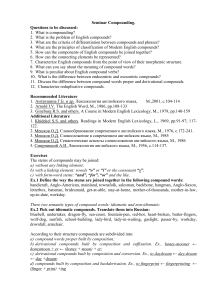
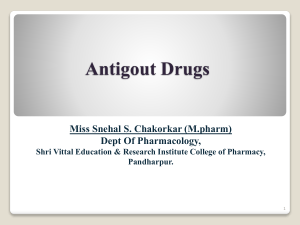
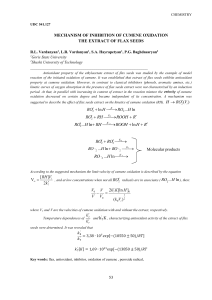
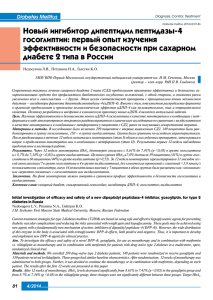

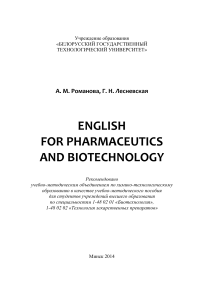
![[Michael C. Pirrung] Handbook of Synthetic Organic(z-lib.org)](http://s1.studylib.ru/store/data/006236139_1-286bb5a91bdd8857ebb85cf974fb798c-300x300.png)